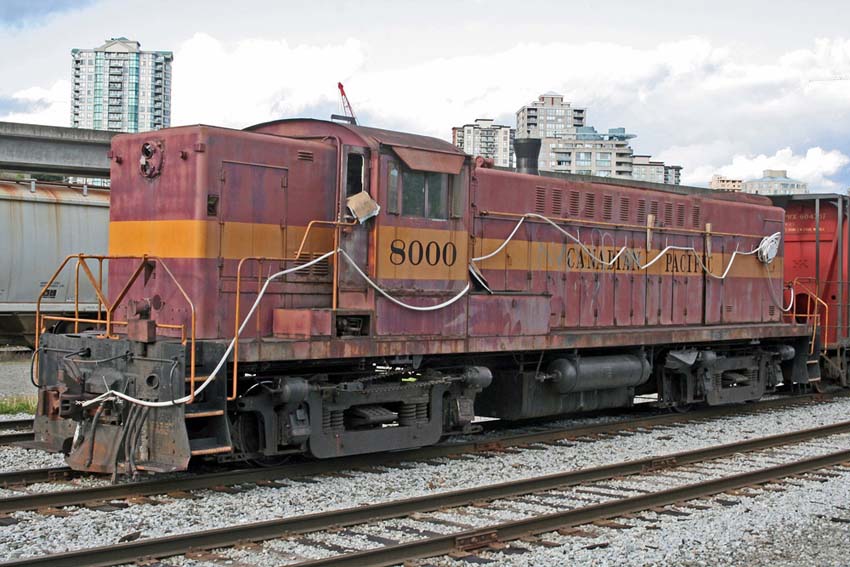

Virtually complete dieselization of the Canadian Pacific Railway is planned by 1961.
By that time, a 15 year program will have been completed during which it is expected the Company will have spent about 250 million dollars for about 1,200 diesel locomotives in the post-war period.
The C.P.R's progressive dieselization program has brought about many economies in operation and caused a steady increase in freight train speed from 16 miles per hour in 1946 to 19 miles in 1956, a trend which continued with the increasing use of that type of power.
The C.P.R. program, which has been directed by N.R. Crump, president of the Company who wrote a thesis on diesel locomotives for his master's degree at Purdue University, had its beginning in 1943 when five yard switchers made their appearance.
While the program did not get into high gear until several years after the war, it was planned from the beginning to take advantage of the greatest economies offered. Dieselization went into effect by areas, and maintenance and servicing facilities were placed at strategic points which would permit future expansion as well as maximum utilization.
The subsidiary Esquimalt & Nanaimo Railway (E&N)on Vancouver Island was the first operating unit to be completely dieselized when 13 road switchers were obtained to supply all motive power requirements there in 1948.
This was regarded as an ideal testing ground for diesels. The E&N was in operation completely separated from any of the C.P.R. As main line runs, and if the diesels didn't work out as expected there would be no disruption of transcontinental service. But the 13 1,000 h.p. Baldwin road switchers came through with flying colors and the program was stepped up. The next area chosen for dieselization was the 172 mile line between Montreal and Wells River, Vermont, over which the Company operates its Boston-bound trains. Twenty-three units were ordered to replace 41 aging steam locomotives then in service on that run.
By mid-summer of 1949, all the heavy interchange freight traffic carried via Wells River, Vermont, and Windsor, the C.P.R. line connecting New England with the US midwest, was being handled by eight 1,500 h.p. Alco A units, four B units, five 1,500 h.p. road switchers, and three yard switchers. Passenger service was taken over by three 2,250 h.p. GM streamliners.
The next area chosen for dieselization of freight service was the rugged 517.5 mile Schreiber division on the main transcontinental line north of Lake Superior between Fort William and Cartier. This program was completed in 1950 by 44 Alco-type locomotives from Montreal Locomotive Works and 14 from GMD, these units replacing 68 steam locomotives formerly used.
Climatic conditions over this division presented the diesels with the severest winter tests they had ever received or could receive on the C.P.R., but they responded well.
The next major conquest by diesel locomotives on the C.P.R. was the Rocky Mountains, followed by other divisions in mountainous British Columbia. Then came the filling-in period which saw the dieselization of all mainline freight and passenger trains.
 and is reprinted here with their permission.
All photographs, logos, and trademarks are the property of the Canadian Pacific Railway Company.
and is reprinted here with their permission.
All photographs, logos, and trademarks are the property of the Canadian Pacific Railway Company.